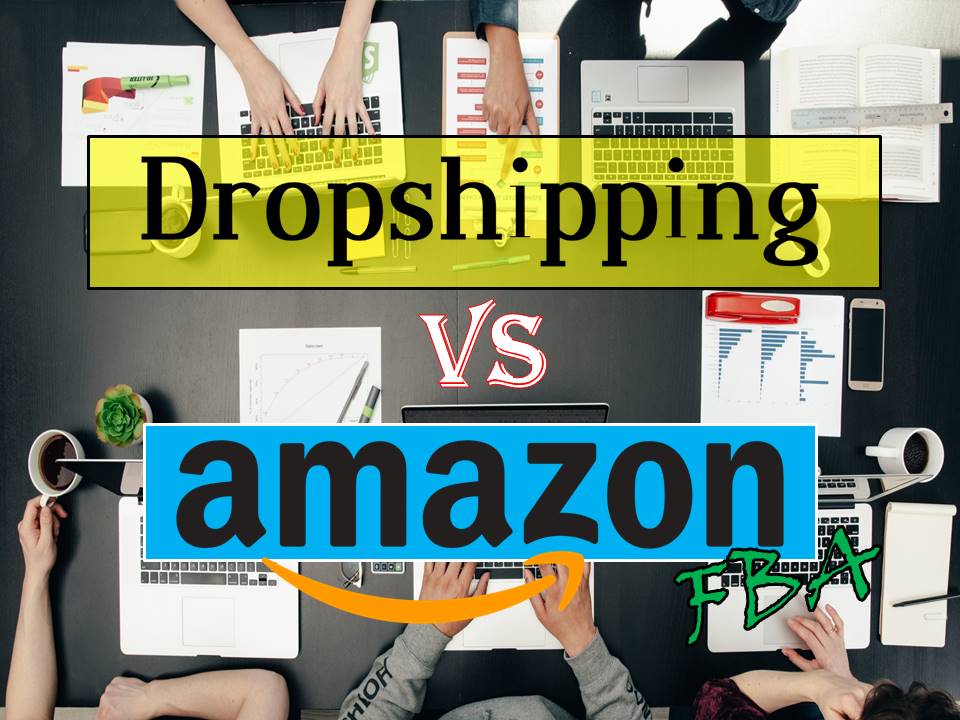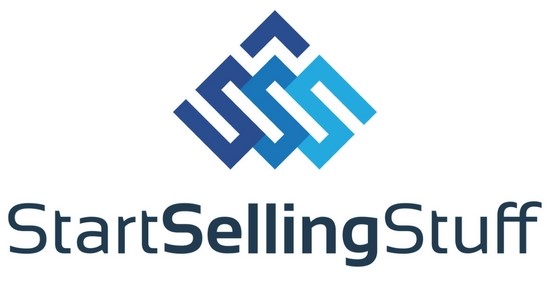Dropshipping vs Amazon FBA

A lot of people wanting to start an online biz have been going nuts about this question: Dropshipping and Amazon FBA, which is better?
Well, let’s find out!
After reading this article, you’ll be able to decide easier and faster which business model would be BEST for you and your business.
You’ll learn…
- Dropshipping and Amazon FBA – what they really are
- How they work – a step-by-step process
- What each of them require – so you can start
- A comparison for both – their differences
Let’s begin.
Dropshipping
Do you want to be your own boss?
Build your own brand?
Grow your own business—at your own pace—while learning a shit ton of stuff?
If you answered yes in all 3, then you’ll like dropshipping. This business model will teach you the fundamentals for every kind of business—well at least for me—it’s how I learned most of the things I know now.
If you want to make it big someday, dropshipping is everything you’ll ever ask for.
What Is Dropshipping?
Simply put, dropshipping is like being the middle-man between a customer and a wholesaler. This means you don’t need inventory to build this business! All you need to know is how it works (which will be discussed in a bit).
Word of caution: dropshipping is not for everyone. You need to be willing to take the responsibility and put in the necessary work and learn every single day. If you can’t do this, then dropshipping isn’t for you.
If you’re interested in learning what dropshipping really is and want an in-depth explanation of what it is, then you should know if dropshipping is still worth it and if it will still work by 2019.
How Does Dropshipping Work?
Here’s the overall process of how you can dropship so you can get an understanding of how it really works:
- Find a niche
- Look for good products in that niche
- Find a supplier (don’t worry this is simple)
- You set up your store (like listing your products).
- A customer visits your store and buys a shirt for $20
- You receive the payment.
- You place an order to your supplier at a wholesale price (e.g. the shirt costs $2)
- Your supplier sends the product to your customer with your company brand and logo.
- A happy customer receives your order.
And that’s it!
Once you set up your store, all you have to do is wait for a customer to buy and fulfill their orders. Your focus and efforts are literally just on marketing and customer service. To further discuss, here are the Pros and Cons of Dropshipping 👇
Pros
Low startup costs – with dropshipping, for as low as $29 (for Shopify), you’re ready to go! (unless you want to do paid traffic like Facebook ads or Instagram shoutouts)
The supplier does all the “hard” work – after receiving an order from your customer, you simply order that customer’s order to your supplier and they do everything else
Little to no overhead costs – yes, dropshipping is really just simple business model which has low barrier-to-entry
Saves you a lot of time – unlike any other business models, you can literally start a dropshipping business in less than 10 hours!
Test more products with less risk – got a lot of products you think will sell? no worries. you can literally test them all.
There are many more pros for dropshipping cause with all honesty, you really just need to market your products. Starting is easy, maintaining and scaling is the real challenge. Once you know how you can do that, you easily earn thousands of dollars – a day, a week, a month – it all depends on how much work you put in.
If you want to know how I scaled my business by spending thousands of dollars on Facebook Ads, then join my email list now to know the money-making secrets I share daily.
Cons
Reliance on your suppliers’ inventory – your supplier can cut off production anytime or stop selling entirely.
Less Profit/Low Margins – There is a lot of stuff you need to pay for in the backend. You might want to use some apps, or hire VAs, or other stuff – and unless you’re scaling, you’ll be moving backward.
Customer Service Hassles – sometimes, when you don’t get the right suppliers or something happens with the customs department (i.e. holds some of the products for some reason), customer will complain. You might need to give them refunds so you must always have some extra cash ready.
How To Set Up Your Dropshipping Store
👉 First, you have to find a niche (this makes your life so much easier in the long run) so you can have a certain type of audience to target. This isn’t related to setting up your store, but this is very crucial if you want to do Facebook Ads or Instagram Shoutouts.
(If you don’t know what a niche is, click HERE)
👉 Create an account in Shopify (this is an eCommerce platform where you can build your store). The reason why I don’t recommend you do this first is because I don’t want you to waste your FREE trial (yes there’s a free trial for 30 days) so don’t waste it by creating an account without an action plan yet.
👉 You find the good products in your niche and import it from Aliexpress. Once you have a store, download the Oberlo app and simply import the products you find from Aliexpress to your store. (Oberlo shows you a step-by-step guide so don’t worry about how to do this part). Also, you can learn how to find the best products HERE.
👉 Now all that’s left is the technical stuff. Since you’ve read up to here, I’m sure you’re serious with having your own business, whether it be dropshipping or Amazon FBA… so as a gift, here’s a Shopify store checklist (exclusive for SDS members).
And that’s all for dropshipping. Next stop…
Amazon FBA
Unlike dropshipping, this isn’t a business without “inventory” but a business without warehousing. You don’t have to worry about the storage, just your product/inventory itself. FBA stands for fulfillment by Amazon and works in a similar way as a third-party logistics company (3PL) where they handle the storage of your products and fulfill orders.
To sum it up, you don’t have to store any inventory and deliver orders yourself, and your margins can be rather high. You need to purchase your goods upfront.
How Does Amazon FBA Work?
There are 2 ways to approach this.
- You have and created your own product
- You have a supplier and you bought the products in bulk
Here’s how you’d do both…
- You ship your products to Amazon’s warehouse
- You list your products on the Amazon marketplace
- A customer places an order on Amazon
- Amazon handles storage, fulfillment and all of your customer support
- A happy customer receives your product
And that’s it!
Amazon takes care of everything else, you just need the product!
However, there are 3 downsides on Amazon FBA….
- They take a large part of your profits.
- Unlike dropshipping, branding is harder on Amazon (people think Amazon is the seller and not you… your brand won’t get remembered)
- You have to follow whatever they say… You’re not “the boss”.
But don’t worry. There are advantages of doing Amazon FBA. With that said, here are its pros and cons…
The Pros
- Amazon takes care of EVERYTHING. (sales, shipping, and even customer service)
- Amazon’s audience is like the ocean. (it’s crazy big)
The Cons
- Amazon takes a huge commission per sale. (15% of your revenues + 10-15% for fulfillment)
- You need products upfront
- Margins MUST be high to counter Amazon’s “commission” per sale.
- You need to follow Amazon’s rules and regulations
- Amazon can hold your money for whatever reason
- Amazon can ban or shut you down at any time
- Heavy competition. You need to constantly monitor listing.
Dropshipping or Amazon FBA?
After reading the article, are you now ready to choose which business model you’re gonna go after?
To simplify…
Dropshipping is literally like building a retail business (but online) and becoming your own boss (and maybe even the boss of others) – plus all the responsibilities that come with it – without all the inventory hassles.
Amazon FBA is like a B2B business where you are unless you find a good supplier, the one manufacturing your own products then sending those products to a 3PL business (Amazon) – and they do all the front-end work.
However, when you run a business where you find your suppliers instead of creating your own products, doing this with Amazon FBA is much riskier compared to doing this with dropshipping.
Unlike dropshipping, you need to find a supplier that you can easily contact and connect with (which is hard since most suppliers are from China) so you can negotiate with them to ship your products to Amazon’s warehouses – and keep producing products for you.
And that’s about it.
Anyone can build an online biz as long as they are willing to put in the work and learn the processes and systems that make up a successful business. All you have to do now is figure out which type of business model you’re going to love or enjoy doing in the long run.
So, which business model are you going to follow? Let us know in the comments!
Enjoyed this article about the business models Dropshipping and Amazon FBA? Click HERE to receive daily emails about how to make money with dropshipping from James Holt, the founder of Start Selling Stuff.
